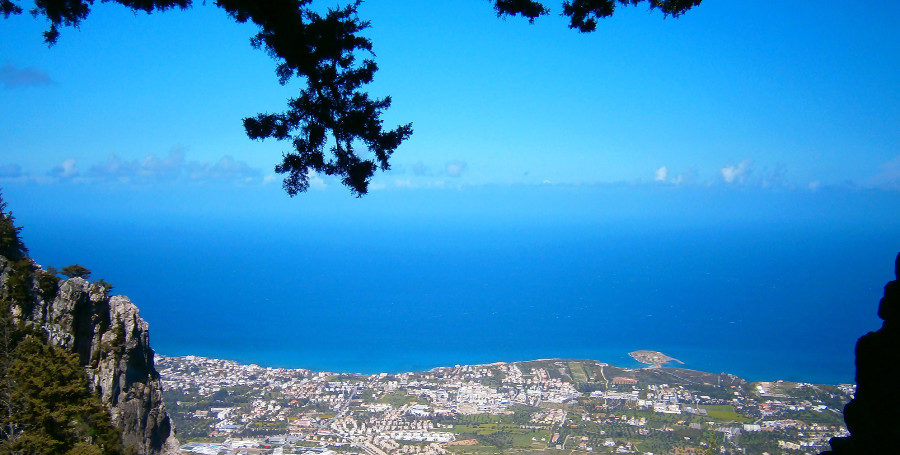
You can also listen to this article.
There are so many beautiful places of interest to visit whilst in North Cyprus. Many of these are great fun for people of all ages. Others are of huge historical and archaeological importance, appealing mainly to adults. Other experiences, such as the opportunity to see turtles hatching or climbing to the top step of a fairy-tale castle, are fascinating for children too.
Unspoilt North Cyprus offers miles of sandy beaches and some of the most wonderful coastal walks. There are sights to see in all the main areas. Below are lists of the main places to view, organised by area. If you wish to come on an NCI Property Inspection Trip or combine your holiday with property viewings, our experts will be pleased to point you in the right direction for viewing key sites of interest in the different areas where our properties are located.
Kyrenia Area
Kyrenia Harbour
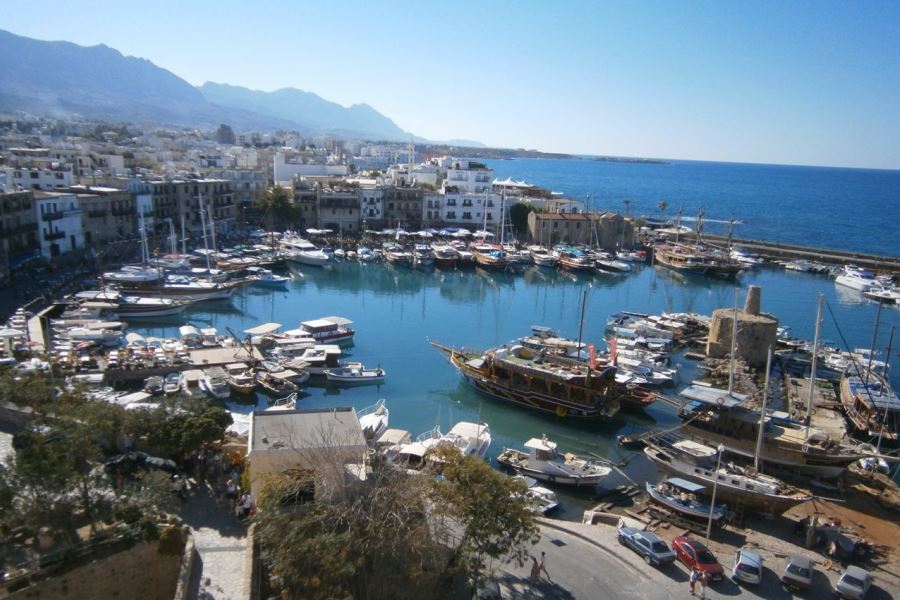
The picturesque old cobbled harbour is the most famous starting place for most of those who visit North Cyprus. Known as “the Jewel of the Mediterranean”, the harbour is lined by quaint old carob store houses now made into excellent restaurants and craft shops. You can enjoy shopping in the backstreets and visit cafes, bars and eating places offering opportunities to try local and international menus to suit all budgets. Day or night-time, you can enjoy a drink and take in the harbour sights. The Boat Café allows you to have a drink on board! You can book boat trips and paragliding as well as many activities in the offices which line the harbour. Kyrenia harbour is a “must see” for all ages.
Kyrenia Castle
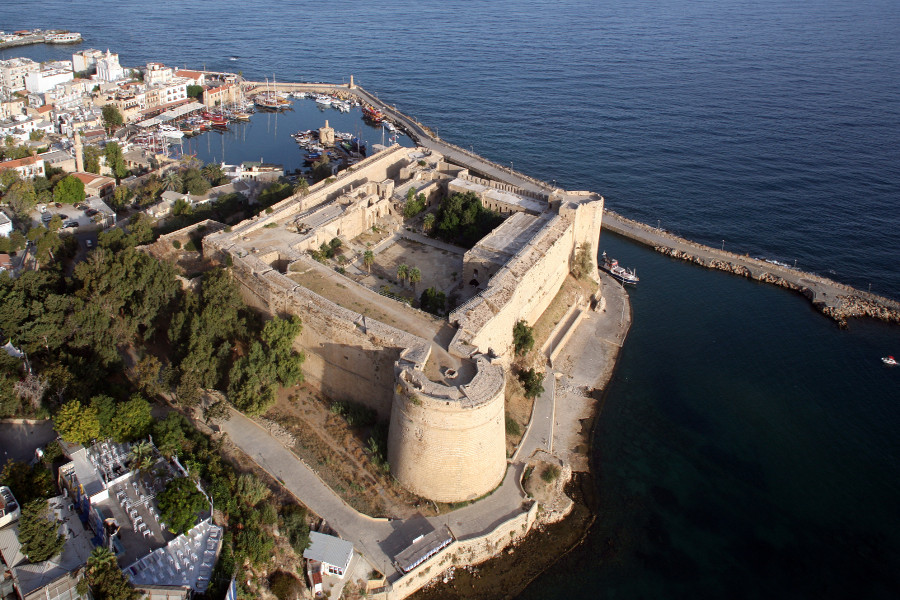
Standing watch over Kyrenia Harbour, the ancient and well preserved Kyrenia Castle is a fascinating mixture of historical periods and styles, well worth a visit. Behind the imposing Venetian castle walls, you will find the Church of St George, Royal apartments, a Byzantine chapel and French dungeons – complete with models of the former residents, slightly macabre, but usually enjoyed by children. The ship in the Shipwreck museum is estimated to have sunk around 300BC and is thought to be the oldest ship so far ever to be recovered from the seabed. Great for all ages.
Bellapais Abbey and Village
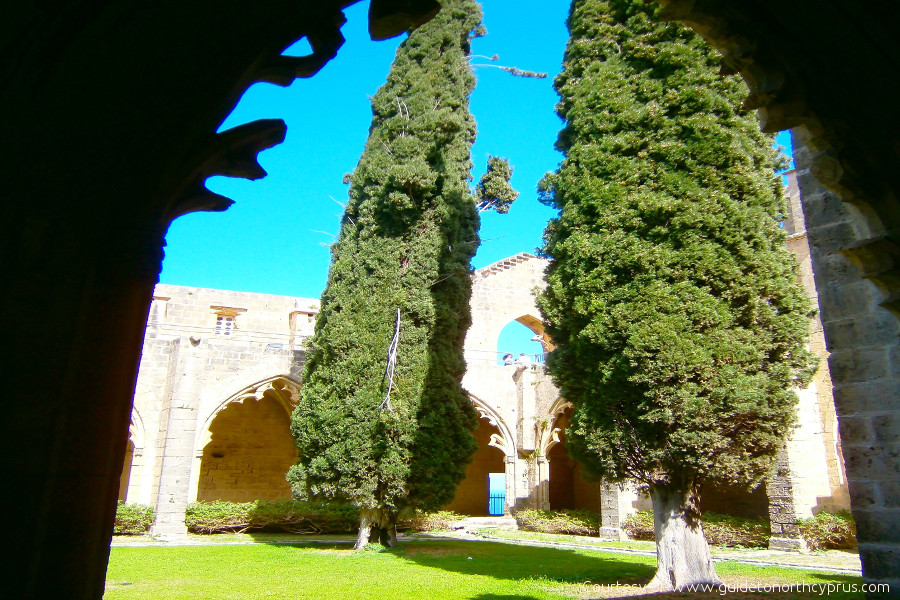
Many people lose their heart to North Cyprus in romantic Bellapais Abbey – the setting for many weddings and events. Perched on the mountainside overlooking the Mediterranean, you can enjoy a drink or a meal in the shadow of the Abbey in the famous Kybele Restaurant, take a guided tour of the Abbey or wander around the backstreets and enjoy the craft shops. The “Tree of Idleness” café and tree is the site for the writing of the famous “Bitter Lemons of Cyprus” novel by Lawrence Durrell who made his home in North Cyprus. Bellapais is mainly of interest for adult visitors.
Bellapais was founded by monks coming from Jerusalem at the beginning of the thirteenth century. Most of the Bellapais Abbey that is visible today dates from the time of Cyprus’ King Hugh III. The Abbey is a beautiful and elegant building depicting Gothic styles throughout the stage of its development. In the spring, the Abbey Hall is the setting for the well-known Bellapais Music Festival which showcases classical music from around the world and is a gem for North Cyprus’ music lovers.
St Hilarion Castle
St Hilarion Castle is one of three well preserved mountain-top castles in North Cyprus, perched on the peak of the Besparmak (Five Finger) mountain range which runs along the north coast of the island. Walt Disney was said to have based his “Sleeping Beauty Castle” upon Hilarion after a visit to the island.
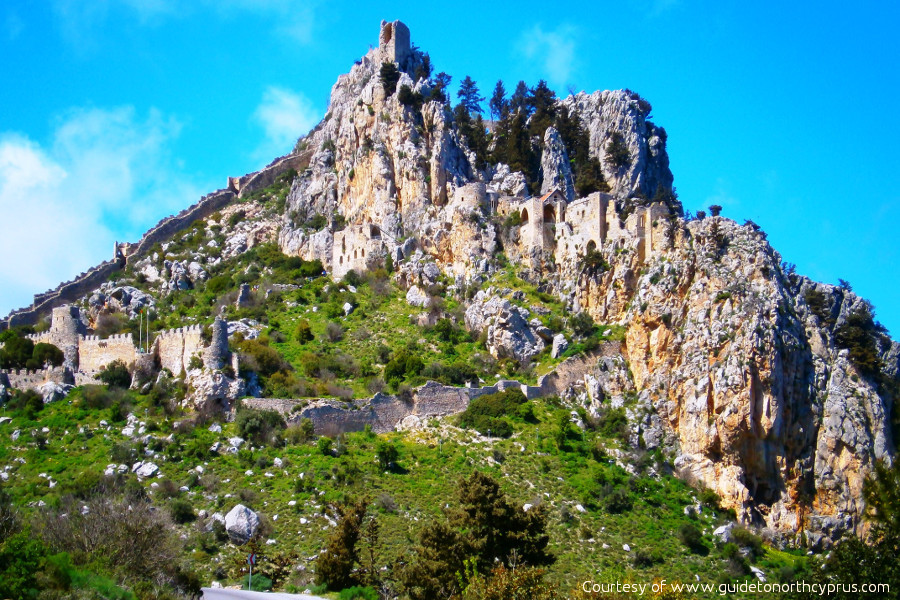
St Hilarion is named after a hermit who once inhabited the summit. The castle is built on three levels. The upper level consists of winding and very narrow steps up to Prince John’s Tower and the Royal apartments.
Tourists need to drive up a winding road from the main Nicosia to Kyrenia highway and park in the castle car park. It is not suitable for those with mobility issues due to the narrow stone steps that visitors need to climb to reach the summit with breath-taking views of Kyrenia and the whole coastline. Recommended in Spring and Autumn. Great for all ages if you like climbing. The ticket office closes around 3pm.
Antiphonitis Church
Antiphonitis Church used to be the centre of an influential monastery and is of interest to those who like old buildings and church history – as well as those who would enjoy the rambling country walk to find it! It is currently partly ruined, but there is a small café and toilets run by the North Cyprus authorities. It was once the most important Byzantine monument in the Kyrenia hills. The church, dedicated to the Virgin Mary, was built in the 7th century. Other parts were added by the Lusignan rulers in the 14th or 15th century.
It is hidden in a wooded valley 4 miles (6.5km) from the village of Esentepe. To find the church, follow the signs from Esentepe village centre. The drive through the mountains is quite spectacular as the track twists its way among the pine trees and arbutus covered hillsides. There are magnificent views over the coastline and in springtime, there are masses of wildflowers.
North East Coast
Turtle Beach in Alagadi
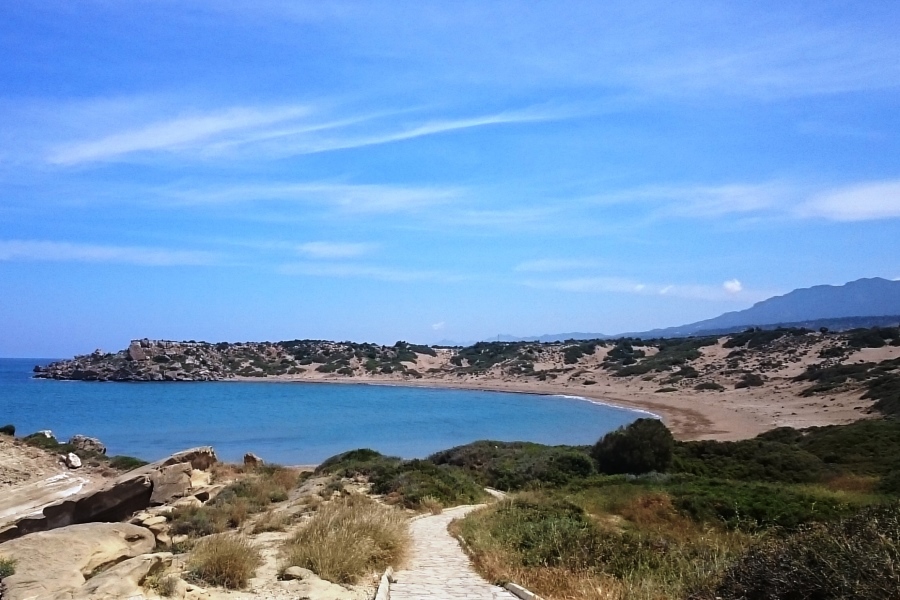
Turtle beach in the Alagadi area is a long stretch of pure golden sandy beach about 15 minutes’ drive going east from Kyrenia along the coast road. It is here where the green and loggerhead turtles come and lay their eggs in the summer. There are opportunities during the hatching season for young people to watch and even to help the hatchlings get safely to the sea. There is a good fish restaurant on the beach, which is a public beach and visited all year long by locals and tourists alike.
Buffavento Castle
Buffavento Castle is the second of the three mountain-top castles. It lies about 10 miles east of Kyrenia up the main highway going over the Five Finger mountains. The track to the castle is an unmade road so this is only for adventurous spirits! It is the highest of the three castles offering the most spectacular view. A 4-mile drive along a rough track is followed by a 45-minute walk up the mountain path. Largely ruined, it is an impressive architecture that walkers or history lovers should not miss when visiting North Cyprus.
Famagusta and the East Coast
Salamis Ancient City
Situated on the East coast, Salamis is one of the most important historical sites in North Cyprus. Take at least half a day to enjoy the site, where there is a café and restaurant at the entrance and lovely beach nearby.
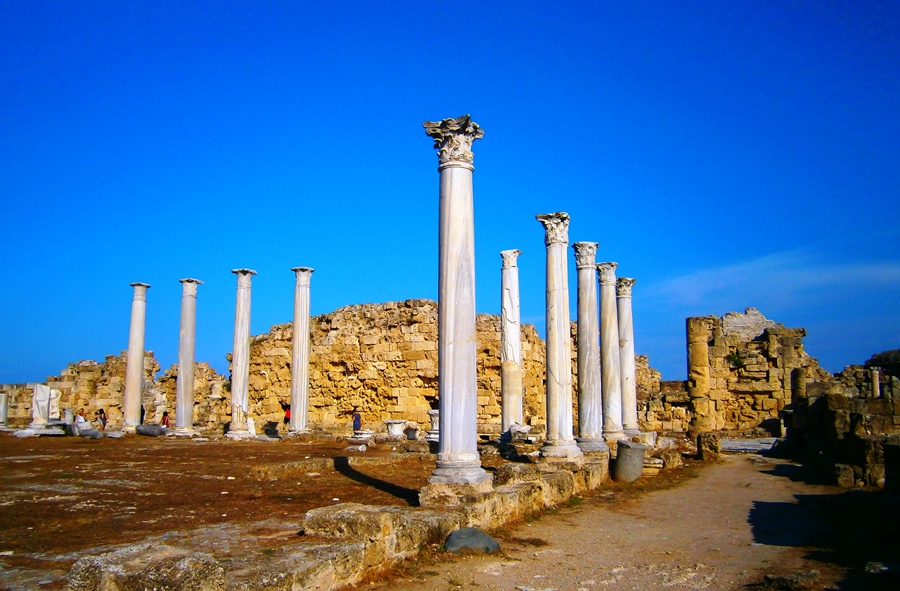
Originally founded around the 12th Century BC, it has variously been occupied by Greeks, Persians, Romans and Christians. Thought to be one of the best-preserved examples of Roman architecture, visitors can view the gymnasium, theatre, amphitheatre, stadium and public baths, mosaics, a harbour wall and agora with columns. It had a long development until its destruction by Arab raiders, earthquake and tides in the 7th Century.
Famagusta City Walls
Famagusta today is a vibrant modern city. At the heart of the modern city is the historic walled city set on the coast – well worth a visit by all ages. Drive over a drawbridge and park inside the walled city where you can climb on top of the walls to enjoy a bird’s eye view.
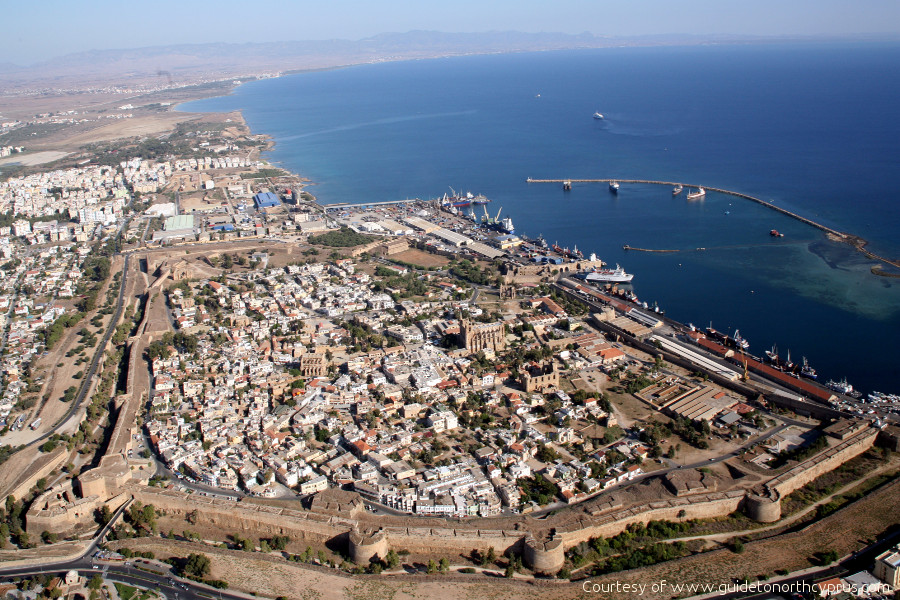
The huge city walls were originally built by the Lusignans and then fortified by the Venetians to protect themselves from the Ottomans, who eventually breached the defences and took over the city. Inside the walls, as well as enjoying craft shops and cafes, you can see the impressive Lala Mustafa Pasha Mosque and many other ancient buildings and churches.
Othello Castle, also known as Othello’s Tower, is a castle inside the walled city. It was built by the Lusignans in the 14th century and was later modified by the Venetians.
Lala Mustafa Pasha Mosque & St Nicholas Cathedral
St Nicolas’ Cathedral, now Lala Mustafa Pasha Mosque, is the most impressive monument in Famagusta. Lusignan kings were crowned here in absentia as kings of Jerusalem after they had been crowned as kings of Cyprus in Nicosia. The cathedral was turned into a mosque by the Ottomans and named after Ottoman General who conquered Cyprus.

St Barnabas Monastery
Great for history lovers. The white domes of tranquil St Barnabas Monastery are visible from the road running along the East Coast. If you love history, particularly Church history, this is a must see.
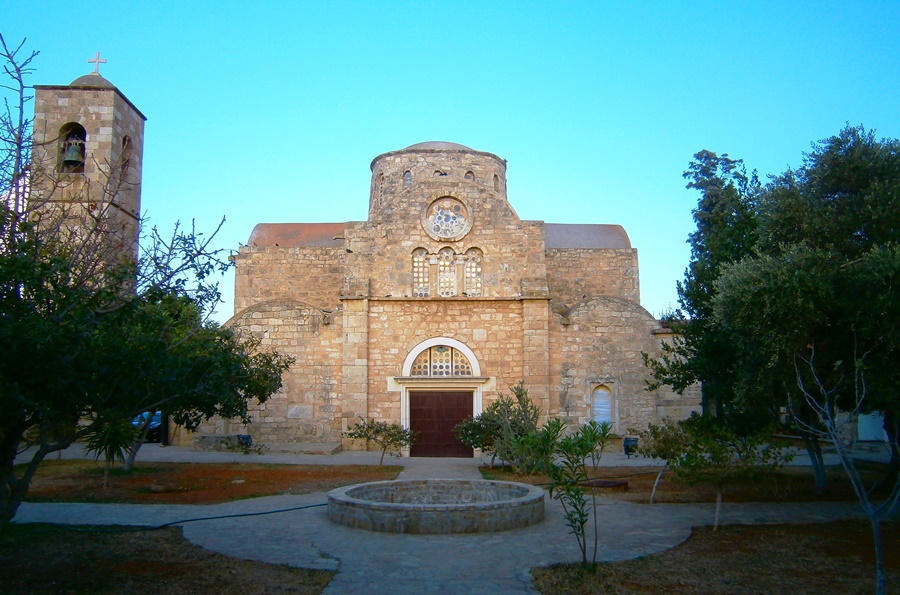
It was built in 1756 and named after St Barnabas, the Apostle, whose tomb is inside a mausoleum in the grounds of the monastery. St Barnabas was martyred in Cyprus after the death of Jesus. The tomb of St Barnabas is still a place of pilgrimage for Greek Cypriots and other Christians who live in North Cyprus. Visitors come from all over the world to the tomb.
There is a lovely courtyard inside the church grounds with café and very interesting Icon Museum inside the church, as well as museum housing many ancient artefacts from the local area.
Glapsides Beach
Great for young adults! If you follow the main road to Famagusta from Nicosia, turn left at the roundabout in Famagusta and keep going straight for about 3 miles, you will spot the sign for Glapsides Beach on the right. This beach is only 200m away from Bediz Beach and is one of the busiest beaches around Famagusta. Visited mostly by the young, majority of whom university students, Glapsides is a long and sandy beach with shallow water up to 150 m from the shore. Facilities available are Glapsides Restaurant, bar, mini market, showers, cheap sun loungers with sunshades and dolphin rides. From the bar, you will hear dance and club music played by a DJ who usually continues to make people parting until early hours during summer weekends.
Kastros Hill Tomb and Cyclopes Caves
Based in the Famagusta area, the Cyclops Cave can be explored on foot or from the water (via scuba diving under/around it).
The Kastros Hill Ancient Cave Tomb is also located in the Famagusta area. The cave tomb was built in the 5th-6th-century BC. Check the internet for directions.
Karpaz (Panhandle)
The North Eastern tip of North Cyprus is known as the ‘Panhandle’, or Karpaz Peninsula. This is also often spelt “Karpas”. The region stretches from the Bogaz area north of Famagusta on its south coast to the northern-most tip of Cyprus. The Karpas covers a substantial part of the island and extends to 50 miles (80 km) in length and up to 12 miles (20km) wide. Karpaz is known for its wildlife including wild donkeys and wildflowers. If you love unspoilt nature, you will find that this area is one of the most beautiful in North Cyprus with miles of untouched sandy beaches.
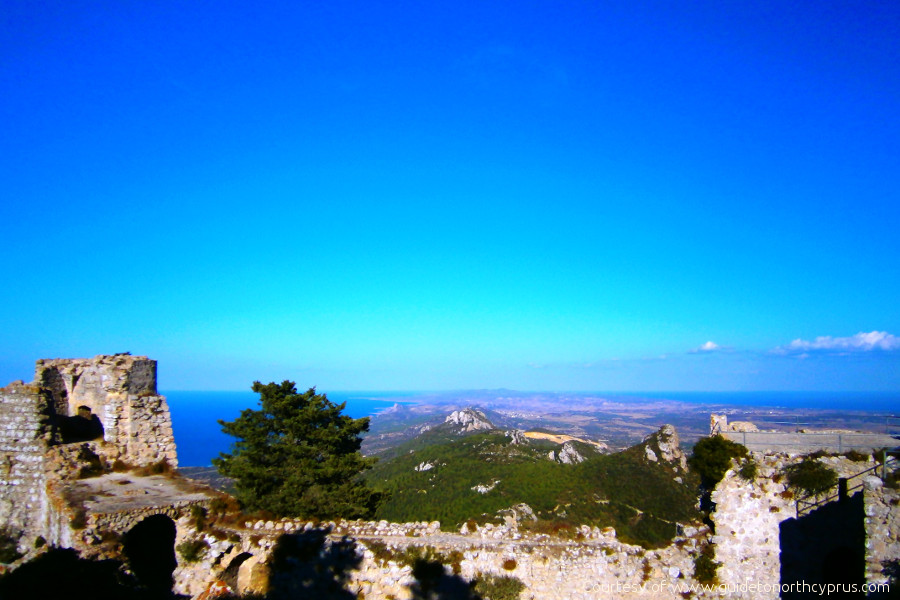
Kantara Castle
Kantara Castle is the most easterly of the three mountain top castles in North Cyprus and a “must see” if you want panoramic views of the Karpaz peninsula and a relatively easy climb compared to St Hilarion.
Access this castle up scenic mountain roads from either the east coast or the northeast coast. In the nearby village is a good restaurant to enjoy a meal either before or after your mountain stroll. There is a site toilet and you will pay a few Turkish Lira each to access the castle (must be paid in local currency).
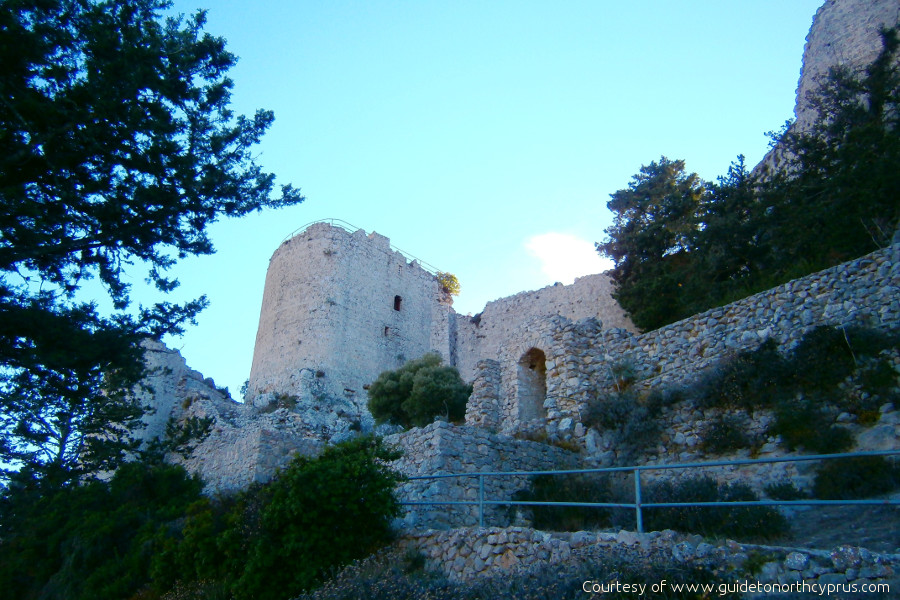
Kantara Castle was built by the Byzantines in 965 to rule the Karpaz peninsula after the Arabs raids. It stands at 610 m and is the most accessible of the three. It is constructed around the entire circumference of the mountain peak – affording panoramic views in all directions of almost all of North Cyprus. On clear days it offers a particularly splendid view on the Karpaz peninsula and Salamis Bay to Famagusta and other parts of North Cyprus. Parts of the castle are very well preserved.
Apostolos Andreas Monastery
At the very far tip is the Monastery of St Andrew, which is an important pilgrimage site for Greek Cypriots and other Christian visitors. The traditional story of its founding recounts that during a journey to the Holy Land, the ship transporting Saint Andrew went off course and struck rocks here. On coming ashore, Andrew hit the rocks with his staff, at which point a spring gushed forth. The waters proved to have healing powers and restored the sight of the ship’s captain who had been blind in one eye. Thereafter, the site became a place of pilgrimage. A fortified monastery stood here in the 12th century, which was taken over by English King Richard the Lionheart.
In the 15th century, a small chapel was built close to the shore. The church of the main monastery dates to the 18th century, while the main buildings were built more recently. There is still a Greek Orthodox priest in residence to welcome visitors.
Golden Beach
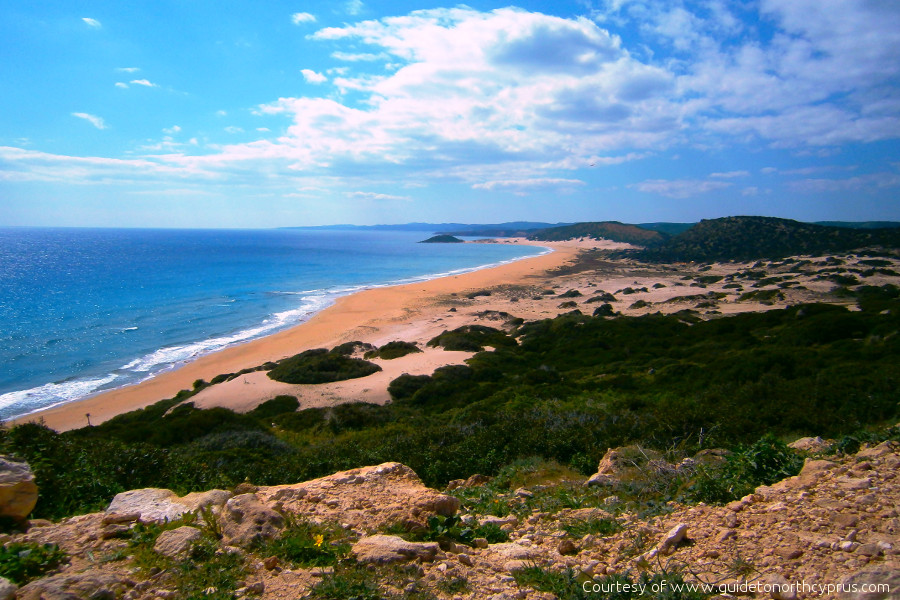
The lonely planet guide describes the Golden Beach as “Possibly the best on the island, Golden Beach is worth the trip to the Karpaz in itself. Its white-sand dunes and gentle curves meet the calm, clear sea, and wild donkeys graze nonchalantly on the hills while you soak up the tranquillity. It’s truly enchanting, with little development.
The beach is 2 miles (5km) before Apostolos Andreas, situated between scrubby headlands and stretching for several kilometres. There are some basic restaurants and accommodation options.”.
Nicosia
The old walled city of North Nicosia (Lefkosa) is a “must see” for an extended visit to North Cyprus. The walls are the best-preserved Venetian fortifications in the Eastern Mediterranean.
Often neglected in favour of better-known Kyrenia old town, Lefkosa old city behind the walls is brimming with wonderful backstreet discoveries, ancient Ottoman buildings, lovely restaurants, ancient mosques and churches, Whirling Dervish performances, reasonably priced craft shops and much more. Being on the edge of the divided city, it is of course also the gateway to the south of the island and visitors with passports which allow access to the Republic can enjoy the unusual experience of crossing to the very different (and more expensive) European shops in Ledra Street in the south of the island for an hour or two to experience both cultures.
There are buses to the old town of Nicosia from Kyrenia, or one can take a taxi ride to the Kyrenia gate.
The Kyrenia Gate
The Kyrenia Gate is one of the original 11 Venetian gates in the Nicosia walls – this one named after Kyrenia, the direction in which it faces. Now only three gates are in use.
Each Old City gate was named after a different city or town in Cyprus. The Kyrenia gate was built in 1567 by Venetians, as a part of the city fortifications. Nowadays it is still used as the main entrance to the old walled city of Nicosa (Lefkosa). A tourist office is located just inside the gate, offering advice on the many museums and guided walks within the charming city walls.
Buyuk Han

Büyük Han or English “Great Inn” is well worth a visit by all ages. Now boasting charming cafes and lovely craft shops, it is the largest ancient inn of its kind on the island of Cyprus and is considered to be one of the finest buildings on the island. Sit in the sun in its cobbled courtyard and soak up the local atmosphere. Located in the capital of North Cyprus, it was built by the Ottomans in 1572, the year after they had seized Cyprus from the Venetians.
Selimiye Mosque & St Sophia Cathedral
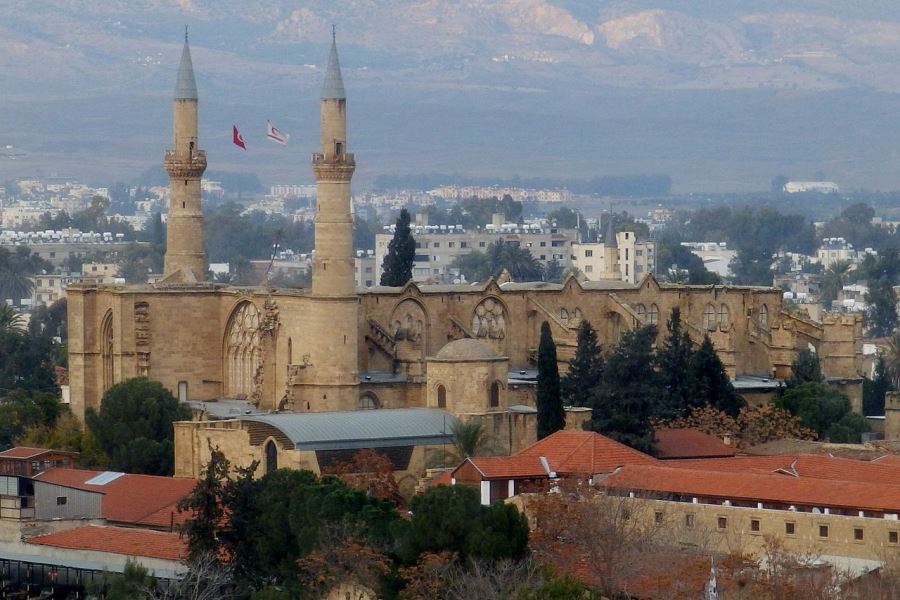
The Cathedral is one of the most impressive Gothic works of architecture in North Cyprus. Founded in 1209 with long construction until 1326. In St Sophia Cathedral kings of Cyprus were crowned. In Ottoman period the cathedral was converted into a mosque to symbolize the power of the Muslim faith. This is well worth a visit.
Notre Dame de Tyre
Notre Dame de Tyre or Our Lady of Tyre is a monastic church in Nicosia, Cyprus. It is located in the Arab Ahmet quarter, in Salahi Şevket Street, formerly known as Victoria Street.
West Coast
St Mamas Church and Icon Museum
St. Mamas Monastery Church is located next to the Güzelyurt Natural and Archaeological Museum, which is in the old Bishops house of Guzelyurt, a charming market town in the west side of the island. If you wish to see an example of a still functioning Greek Orthodox Church whilst in the north of the island, this is worth a visit. Purchase a ticket in the museum which allows entrance to the church and the icon museum as well as the natural history museum in the old Bishops house.
St. Mamas was a Greek Orthodox saint – important to the Greeks in Cyprus. Thought to be from Paphlagonia or Pamphylia, he was subjected to various forms of torture before being killed in the Cappadocian city of Caesarea during the time of the Roman Emperor, Aurelianus (274 AD). Annual pilgrimage buses arrive for services at this church each year on the Saints day.
Museum of Nature and Archaeology
The museum of nature and archaeology is situated next to St Mamas monastery. The building was originally the palace of the Bishop of Morphou (Guzelyurt in Turkish), and up to 1974 housed town offices. It was opened as a museum in 1979 after restoration.
The ground floor displays a collection of stuffed animals native to Cyprus. The upper floors of the museum house the archaeology section with displays from the Neolithic and bronze ages. In the second and third rooms, there is a display of finds from the Tumba Tou Skuru settlement including fabulous examples of Roman gold headwear.
Guzelyurt Saturday market
The Saturday morning market across the road from the Church is well worth a visit too, when you can experience the local culture and purchase locally produced produce as well as crafts and clothes.

Ancient City of Soli Ruins
These ruins are located about 25 minutes’ drive west of Guzelyurt, just beyond the coastal town of Gemikonagi. There are good restaurants nearby including Mardin Restaurant and beach.
One of the Ten City Kingdoms that made up the island at that time, the town of Soli was probably founded around 6th Century BC. The ruins that can be seen today were mainly built by the Romans. You can find an amphitheatre, remains of a 5th Century basilica, mosaics and a base of the fountain once dedicated to Goddess Aphrodite.
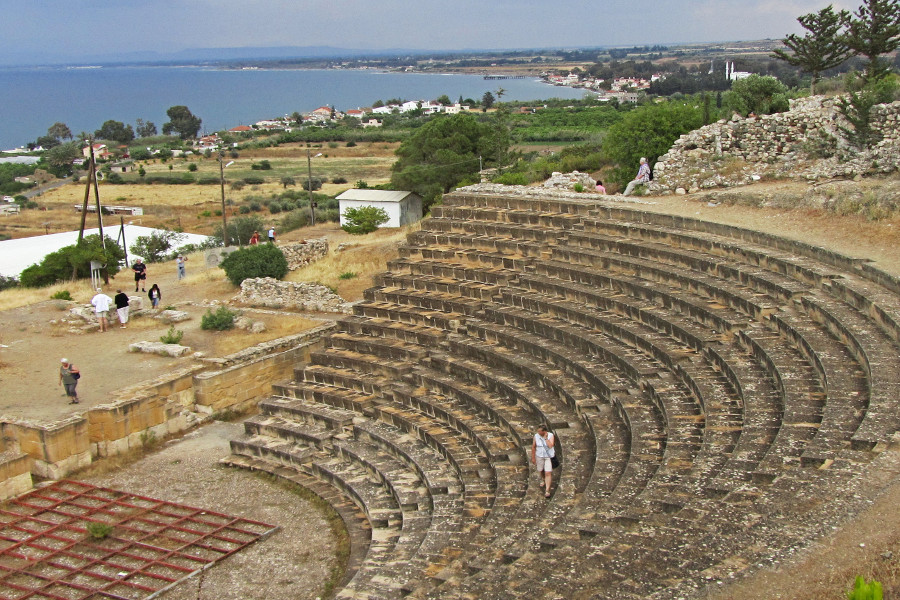
The Roman Mosaics are covered by a roof to preserve the mosaics and buildings and most famous is the “Soli Swan” Mosaic. There are other excavations still in progress of this important historical site. There is a low entrance fee to be paid in Lira.
Vouni Palace and Ruins
The ruins of this amazing hilltop palace are accessed up a well paved but very steep and narrow road from the west coast road. Some tourist buses stop at the foot of the road and the visitors walk up. It’s well worth the drive or walk as the views from the palace are spectacular – with sights of the whole of the Morphou Bay and the Troodos mountains. There is a low entrance fee, to be paid in Lira.
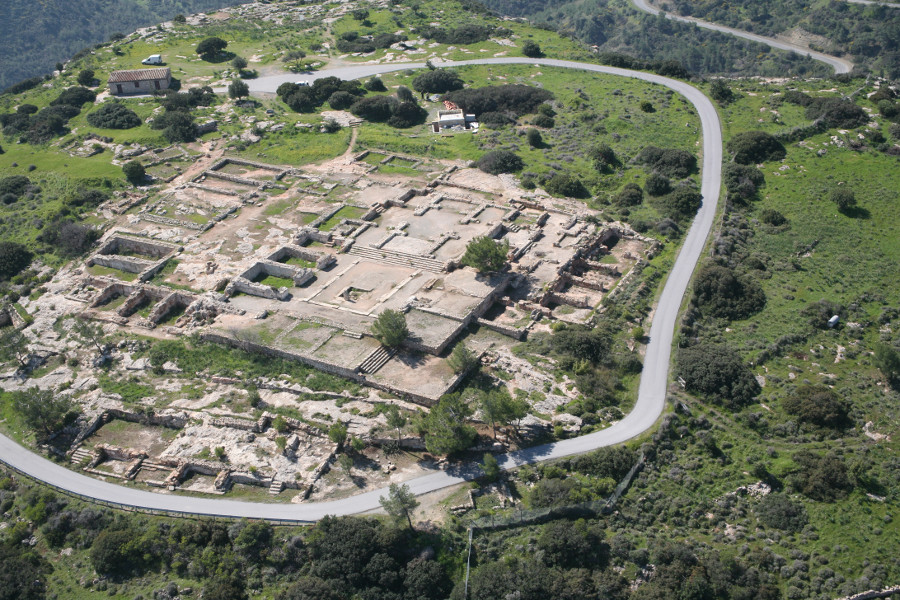
The site is located a few miles west of the ancient city of Soli. A Greek temple of Athena perched on the edge of the hill on the mountain side, and the ruins of a once superb Persian palace are situated on the summit of the hill facing the Morphou Bay and Turkey beyond.
Only the palace site and the temple site have been fully excavated and both remain now well – tended and open to visitors. There is a visitor office and there is a low entrance fee, to be paid in Lira as well as toilets.
If you wish to come on an NCI Property Inspection Trip or combine your holiday with property viewings, our experts will be pleased to point you in the right direction for viewing key sites of interest in the different areas where our properties are located.




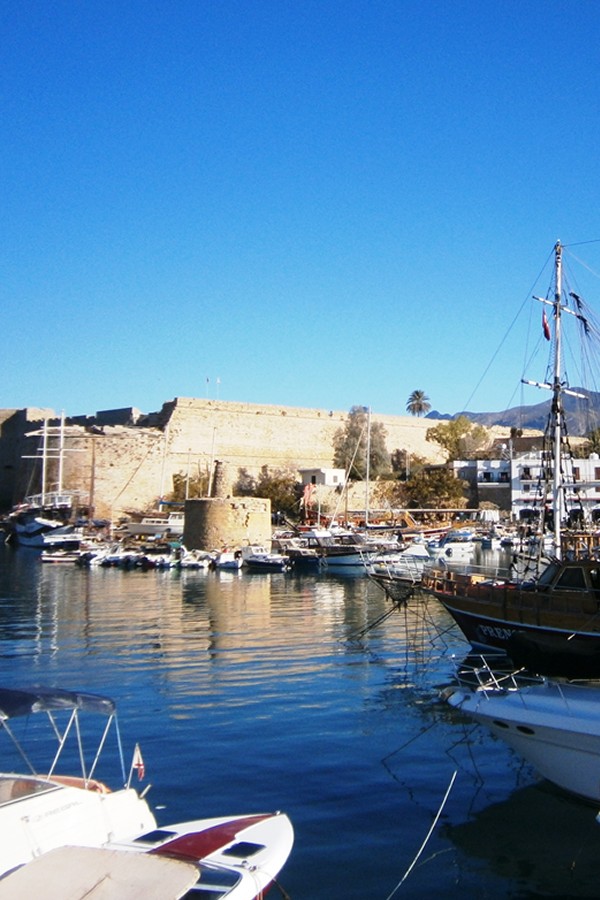
John Constantine
on said
Thanks for the wonderful views and information. A job well done.